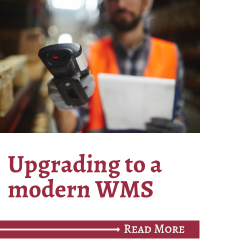Historically, the advances in warehouse technology have reduced paperwork. These changes have translated into a reduction in receiving/shipping processing time. They also have provided better accuracy for inventory and lot-tracking capabilities. According to Eric VandenBerg, director of customers solutions and product management, Harvest Food Solutions, the future of warehouse management systems (WMS) will follow that trend and create an improved workflow.
“Think Google Maps for your warehouse,” Mr. VandenBerg said. “Your technology will provide you with an optimized path for warehouse movement using the Internet of Things and radio-frequency identification (RFID).”
Employees will know the location of all raw materials in the warehouse without having to physically hunt them down. Each item will be able to communicate with one another in real-time. Pre-emptive error notifications for incorrect inventory pulls will bring accuracy rates up and labor costs down.
one another in real-time. Pre-emptive error notifications for incorrect inventory pulls will bring accuracy rates up and labor costs down.
Inventory space is a premium in today’s warehouses, and WMS technology can reduce its footprint. Integrated systems manage inventory in a close-space environment.
“You won’t deal with sprawl to manage your inventory, and your pallets, racks and stacks will be close, compact and accessible,” Mr. VandenBerg said.
Using a synergistic product suite ensures that data is always being presented accurately. For example, if a program doesn’t immediately register that the warehouse received a pallet of packaging, bakers run the risk of inaccurate inventory — or worse — a stoppage in production.
“Managing these transactions is critical to ensure you are managing the right metrics,” Mr. VandenBerg said. “Your solutions need to include a business intelligence component that is robust and scalable. It needs to give you quick views for important KPI’s. You need to trust that the data is correct with the flexibility to dive into it.”
RFID offers the potential to significantly reduce manual data entry errors. The technology allows products to communicate with trackers without the need to manually scan barcodes or labels. While this can cost more, it creates a sophisticated system that shows exact locations and movement of inventory.
However, assimilating RFID into a legacy or closed-database system can be difficult. RFID can have limitations. In a freezer warehouse, installation of antennas can run slow due to the working climate. That said, Robert White, president and director of development, Focus Works, added that there is an increasing number of bakeries opting for RFID systems vs. barcode labeling.
“Each bakery has different warehouse layouts, packing and shipping area configurations so each requires unique design work,” Mr. White said.
While the list of warehouse options grows, the user-friendly simplicity of technology must improve as well.




